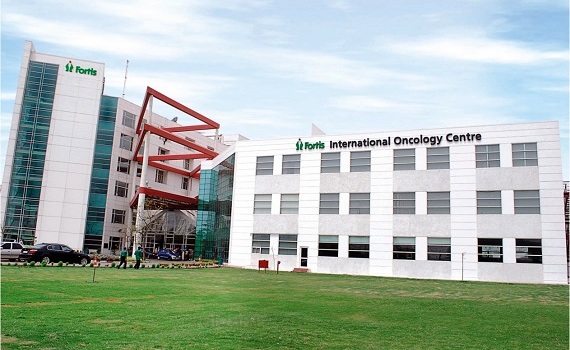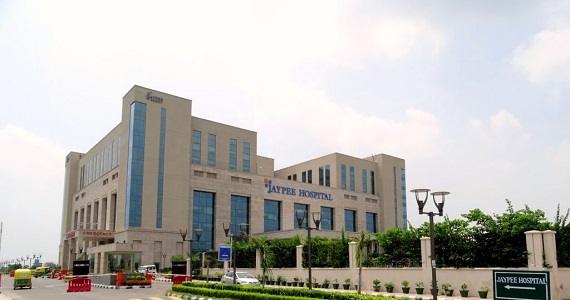Osteotomy Treatment in India
treatment
starting from
Introduction
Osteotomy is a crucial orthopedic surgical procedure that involves cutting and reshaping bones to correct deformities, realign misaligned bones, or change the bone's orientation to improve its function. This highly specialized surgery is commonly used to treat conditions affecting weight-bearing joints like the knees, hips, and ankles. Osteotomy plays a vital role in the field of orthopedics, providing patients with an alternative to joint replacement surgery and offering significant benefits in terms of pain relief, improved joint function, and joint preservation. In this comprehensive guide, we will explore osteotomy in greater detail, discussing its types, the conditions it addresses, the procedure itself, and its numerous benefits.
1. What is Osteotomy?
Osteotomy is a surgical procedure that involves strategically cutting and reshaping bones to address various bone and joint-related conditions. The term "osteotomy" is derived from the Greek words "osteo" (bone) and "tome" (to cut), accurately describing the essence of the procedure. Orthopedic surgeons perform osteotomy with the aim of correcting bone deformities, realigning bones, redistributing the weight-bearing load, and improving joint function.
2. Types of Osteotomy
Osteotomy encompasses various types, each tailored to address specific bone and joint issues. Some common types of osteotomies include:
a). High Tibial Osteotomy (HTO): This type of osteotomy is primarily performed on the knee to treat early-stage knee osteoarthritis or correct genu varum, commonly known as bow-leggedness. HTO involves cutting and repositioning the upper part of the tibia bone to shift the weight-bearing load away from the damaged or affected area, thereby reducing pain and slowing down the progression of arthritis.
b). Distal Femoral Osteotomy (DFO): DFO is another type of knee osteotomy, typically used to treat genu valgum, or knock-knee deformity. By cutting and repositioning the lower end of the femur bone, surgeons can correct the alignment of the knee joint, alleviating symptoms and preventing further joint damage.
c). Hip Osteotomy: This osteotomy is employed to treat hip dysplasia, a condition in which the hip joint doesn't develop properly, leading to instability and early arthritis. By reshaping the hip socket or the femoral head, the surgeon can improve joint congruence and delay the need for total hip replacement surgery in younger patients.
d). Bunionectomy: A bunionectomy is a type of osteotomy performed on the foot to correct bunions, which are bony bumps that form at the base of the big toe. During this procedure, the surgeon removes the bony prominence and realigns the bones to improve the foot's structure and alleviate pain.
e). Radial Osteotomy: Radial osteotomy is commonly performed on the forearm to correct certain congenital or acquired deformities, such as radial club hand, a condition in which the radius bone is underdeveloped.
3. Conditions Treated with Osteotomy
Osteotomy is a versatile surgical technique used to address various bone and joint conditions, including:
a). Osteoarthritis: Osteoarthritis is a degenerative joint disease characterized by the gradual breakdown of the cartilage that cushions the bones in the joints. Osteotomy can be beneficial for patients with early-stage osteoarthritis, providing pain relief and improving joint function by redistributing forces away from the damaged areas.
b). Malalignment: Misaligned bones, such as bow-leggedness or knock-knees, can cause uneven stress distribution on joints, leading to pain and dysfunction. Osteotomy can correct these alignment issues, restoring proper joint mechanics and function.
c). Hip Dysplasia: Hip dysplasia is a condition where the hip joint is poorly formed, resulting in instability and an increased risk of early arthritis. Osteotomy can be used to reposition the hip joint, allowing for improved stability and reduced strain on the joint's surfaces.
d). Fracture Malunion: When a bone heals in a misaligned position after a fracture, osteotomy can be performed to realign the bone and restore proper function.
e). Bone Deformities: Osteotomy is an effective treatment option for various bone deformities caused by congenital conditions, developmental issues, or acquired injuries.
4. The Osteotomy Procedure
The osteotomy procedure is typically performed in a hospital or surgical center under general or regional anesthesia. Before the surgery, the orthopedic surgeon will conduct a thorough evaluation of the patient's condition, which may include reviewing medical history, performing physical examinations, and analyzing imaging studies like X-rays, CT scans, or MRI.
During the surgical procedure:
a). Incision: The surgeon makes a small incision over the affected bone to access it.
b). Bone Cut: Using specialized surgical instruments, the surgeon carefully cuts the bone following the pre-determined plan based on the pre-operative imaging.
c). Bone Realignment: The bone is then reshaped or repositioned to correct the deformity or alignment issue, guided by the surgeon's experience and surgical plan.
d). Fixation: To hold the bone in its new position, the surgeon may use screws, plates, rods, or other fixation devices. The choice of fixation method depends on the specific osteotomy and the surgeon's preference.
e). Closure: After confirming the correct alignment, the incision is closed with sutures or staples, and the affected limb may be immobilized with a cast or brace to aid the healing process.
5. Benefits of Osteotomy
Osteotomy offers numerous benefits for patients dealing with bone deformities and joint issues:
a). Joint Preservation: One of the significant advantages of osteotomy is its ability to preserve the natural joint. By realigning bones and redistributing forces, osteotomy can delay or prevent the need for joint replacement surgery.
b). Pain Relief: Osteotomy can provide effective pain relief, particularly for patients with early-stage arthritis or malalignment issues. By correcting the underlying problem, the procedure addresses the source of the pain.
c). Improved Joint Function: Restoring proper bone alignment enhances joint stability and improves overall joint function. Patients often experience improved mobility and range of motion after osteotomy.
d). Faster Recovery: Compared to joint replacement surgeries, osteotomy generally involves a faster recovery period. Patients can typically return to light activities within a few weeks and resume more strenuous activities within a few months, depending on the type of osteotomy performed.
e). Long-Term Success: When performed by experienced orthopedic surgeons, osteotomy can provide long-lasting relief and improved joint health. Many patients enjoy the benefits of osteotomy for years, allowing them to maintain an active and fulfilling lifestyle
Conclusion
Osteotomy is a highly effective and versatile surgical procedure used to correct bone deformities, realign misaligned bones, and improve joint function in various bone and joint-related conditions. Whether you are dealing with early-stage osteoarthritis, bone malalignment, or a congenital deformity, osteotomy offers significant benefits, including pain relief, improved joint function, and joint preservation. If you are considering osteotomy as a treatment option, consult with an experienced orthopedic surgeon to discuss your specific condition and determine if osteotomy is the right approach for you. Remember, early intervention and proper management can lead to better outcomes, enabling you to lead a healthy and active life with improved mobility and reduced pain.
How It Works
Need help in organizing medical travel to India?














